Subscribe by Email
-
Recent Posts
Category Archives: Books
Gone Girl & This Is Where I Leave You
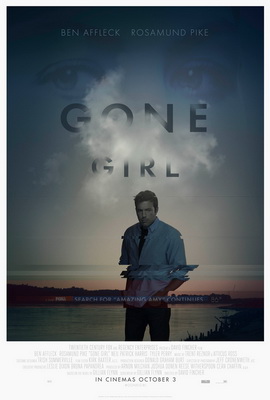
Well, the opening weekend for the movie “Gone Girl” is finally upon us. Is everyone ready? I had to re-check my review of Gillian Flynn’s 2012 bestselling book to remember the gist of it. What I remember is this: the book starts out pretty straightforward or so one thinks and then towards the end it pretty much flies off the rails, right? It takes some pretty crazy twists and turns. But you weren’t expecting Nick and Amy to be the nice married couple who recently moved back to Missouri from New York, were you? So much for the celebration of their fifth wedding anniversary. Amy and Nick are perfect for each other … that is, until they aren’t.
I plan to see “Gone Girl” this weekend. Of course, I have to see if Ben Affleck is the right “Nick” and if Rosamund Pike is the true “Amy.” The two actors didn’t naturally come to my mind when plans for the movie were announced. Affleck was coming off his Best-Picture winner “Argo” and Pike reminded me of her lovely role in “Barney’s Version.” But could either one play conniving dirt bags? I’m sure having David Fincher as director helps. He’s had some big movie hits with “The Social Network,” “Fight Club” and “Seven” to name a few. So “Gone Girl’s” outlook looks promising, even if it’s a lengthy 2.5 hours long. But will the ending be changed? If you were a fan of this book, then you’ll just have to go check it out and see.
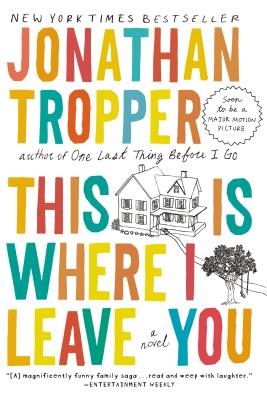
Meanwhile I just finished Jonathan Tropper’s 2009 novel “This Is Where I Leave You,” which also has been adapted to the big screen and is in theaters right now. I haven’t seen the movie of it yet, but I thought the book was quite good. You probably saw the movie preview and know it’s about a quirky Jewish family that gathers for the first time in years to observe “sitting shiva” together after the death of the father. The mother, the three grown sons, their sister and the spouses don’t necessarily get along but must gather at their childhood home for seven days to receive visitors and mourn.
With all the colorful personalities, it’s a bit of an awkward situation at the house made more so by the main character, the son, Judd, who happens to be on the verge of a breakdown. He’s discovered his wife has been having an affair with his boss for a year, which has sent him into a dark tailspin, giving the book’s narration a lonely, vulnerable lens.
The book’s rather sad but also quite funny. Tropper has done a number with these characters, especially the four siblings, breathing life and humor into them. There seems to be no real secrets in the family among each other’s personal lives, and none of them has very good relationships with their spouses. It’s a bit of a spoof on relationships and marriages. There’s considerable profanity and sex and sex talk in the book, which might not be for everyone. I think quite a few people at Goodreads disliked how the main character Judd objectifies women through out it (mentioning if they had smooth legs or a great behind etc.). He’s meant to be a lonely, sad sack of a horny male but that’s not to defend it too much.
I, too, at first worried the novel “This Is Where I Leave You” was just going to be a flippant look at a family and imperfect marriages — something for laughs — but instead as it goes on the story conjures some real heart about growing up, family, and the people we love. Not to mention, it’s filled with wry observations about life that seem too good to miss. The suspense of it comes from wondering if Judd is going to resolve his breakdown and marriage, and if the family will pull through the shiva together or implode. You’ll want to stick with it to find out. Tropper is definitely a talented writer who pulls it wonderfully together. I hadn’t read him before, but plan to check out his novels in the future. I’m thinking the novel must be considerably better than the movie of it out right now. Have you seen it?
Or you have you read this novel or author before? Or have you seen the new “Gone Girl” movie? And what did you think? Continue reading
Posted in Books
6 Comments
September Days

Greetings and happy September! I was away for a while, sailing with my hub on Lake Ontario and the St. Lawrence River. We rented a boat and had an enjoyable adventure, sailing during the days and docking overnight at small marinas and islands. I’m still learning quite a bit about sailing, but my husband grew up on it and knows most of the ins and outs. We had some good wind and the area was beautiful and we didn’t have any incidents with the boat or anything so we feel very fortunate that it all worked out quite well.
While onboard I was reading Annie Proulx’s first novel “Postcards” from 1992. It’s not really an easy novel so I’m not sure why I chose it for reading material on the boat, but a friend had given me her copy months ago and told me to read it. So I eventually did, even though I had to push myself a bit in the last 100 pages.
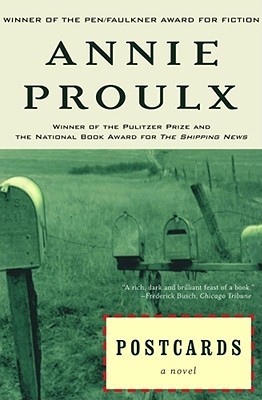
It’s a story that follows the Blood family, who are New England farmers, as they struggle to exist and adapt in the 20th century, from the 1940s through the 1980s. There’s the parents, Jewelle and Mink, the daughter Mernelle, and the sons Dub and Loyal, who turns out to be the main protagonist.
At the beginning, Loyal, the eldest son, is forced to leave the farm when he accidentally kills his lover and hides her within a stone wall. That’s when you get an idea this novel is going to be rather bleak. Loyal doesn’t tell anyone about her death but takes off across the country on a self-imposed exile of solitude and struggle, like he deserved the hardships for his past deed. Over the years, he roves from job to job first in mining, then fossil finding and later trapping, sending back occasional postcards to his family’s farm in Vermont. He’s viewed rather sympathetically in the book despite what he’s done.
Meanwhile, the rest of the family falls in ruins, and eventually loses the farm. The other son Dub and the father spend time in jail for arson, the daughter responds to a lumberman’s ad for a wife, and the mother finds work in a cannery till one day she loses her way driving on a mountain road during a snowstorm.
So all does not go too well for the Bloods. “Postcards” is a different kind of novel, one that follows a family’s struggles during the American 20th century and mixes in postcards at the start of each chapter from the family members to one another and from other characters. The postcards add an interesting dimension to the characters and the times they’re living in. Author Annie Proulx is at her best describing the lives of her gritty characters in farming, mining, hunting, and trapping and the natural world around them. Wow does she seem to know how these people live and breathe. This novel didn’t win the 1993 Pen/Faulkner Award for nothing; she can write.
But the story itself didn’t really consume me, and I didn’t latch on to any of the characters. Towards the end, the book rambles for a while and I had to focus hard to finish it. Proulx seems a brilliant stylist but perhaps her novels such as this one aren’t exactly known for riveting storytelling. They’re known for having quirky, odd characters, yes, in bleak or violent circumstances, but the story not as much. I read her novel “The Shipping News” back in the ‘90s and recall it being filled with quirky characters in dark situations, too.
What do you think? Have you read any of her books before?

It’s good to push oneself reading at times, but now I need something fun and lighter. I’m going to pick up Jonathan Tropper’s novel “This Is Where I Leave You” because the movie is coming out soon and it looks worthy of some laughs. Hopefully the book is good, too. Have you read this one, or do you plan to see the movie? Continue reading
Posted in Books
4 Comments
The Painter

A lot of people read and raved about Peter Heller’s post-apocalyptic debut novel “The Dog Stars” from 2012. I gave a copy to my Hub who liked it quite a bit. I still plan to read it, but picked up the author’s second novel “The Painter,” wondering if it could be as good.
It’s about a well-known expressionist painter Jim Stegner, 45, who’s trying to piece his life back together after a stint in jail, two divorces and the death of his teenage daughter to a drug dealer. He’s moved from Santa Fe, N.M., to a rural town in Colorado for a fresh start, and appears to be finding solace in the beauty of the wilderness and in fly-fishing. He’s inspired to paint again and finds a model for his art, who’s a fun, smart woman who seems to understand him and get his work. In time, she becomes his girlfriend.
All goes well, until Stegner encounters a man brutally beating a horse. He’s a well-known bad guy who’s a hunting outfitter in the area. Stegner’s violent altercations with him, and then his brother, shatter the peaceful existence of his new-found life. The police are on to Stegner, and so, too, is one of the hunters seeking revenge. Stegner’s on the run, but he’s still painting thought-provoking works fueled by anguish and love. His daughter’s death still hangs over his life. In the end, you’ll be wondering if he’s going to be able to cope without her, and you’ll also wonder if he’ll be arrested for the hunter’s murder, or if he’ll be killed. But you won’t know for sure till the last few pages.
It’s a pretty suspenseful book and I got drawn in by the protagonist’s plight right from the start. He seems a good-hearted, well-intentioned guy who’s made some mistakes and is trying to start anew. Unfortunately he also has some violent tendencies when he runs into bad situations or people, which get him into trouble.
“The Painter’s” plot is compelling and Peter Heller captures the western landscape and fly-fishing beautifully. Painting also plays a big role in the book as Stegner’s mental states take shape on his canvases. For the most part, the depiction of his art throughout it enhances the novel and adds an interesting element. There’s just one point near the end that I felt the painting parts got in the way and were a bit tiresome. It’s when an intense scene with the sheriff confronting Stegner is followed by dozens of pages about Stegner’s next paintings when all you really want to know at that late point is will he be apprehended. It just gets a bit prolonged there.
Otherwise, I really liked Heller’s writing style. “The Painter” has some beautiful descriptions and poignant thoughts on life and love. On top of that it has some intense action scenes, which heighten its suspense. The ending, too, deciding Stegner’s fate, kept me thinking about it for long after. Now I’m really looking forward to reading “The Dog Stars.” After sampling this one, I know it’ll be good. Heller, for sure, is a writer to be watched.
How about you — have you read this novel or author before? And what did you think? Continue reading
Posted in Books
3 Comments
Crazy for the Storm

I was at the beach in California for a few days this past week and zoomed through this nonfiction book (pictured below), which proved to be a quick and moving read. “Crazy for the Storm: A Memoir of Survival” by Norman Ollestad was published back in 2009, but I didn’t cross paths with it until recently when I saw it on display in a bookstore in Canada. Come on, with a cover like that there was no way I was going to walk away from it, especially since the book has such terrific blurbs about it all over its front and back.
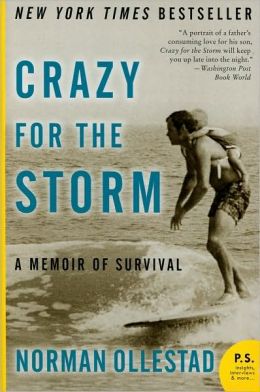
I was ready for an “Into Thin Air”-type of riveting, survival experience, but this is pleasantly something a bit different, a bit more. It’s mainly about a boy, his family, and particularly his father, living on Topanga Beach in California in the 1970s. The father is an adventurous-type of thrill-seeker who pushes his son from the age of three onward into the world of surfing, hockey, and competitive downhill skiing.
The father’s rather crazy thrusting his son into dangerous challenges at such a young age, but he also has a zest for life that’s quite admirable. The son both resents him for involving him in scary activities and looks up to him. But it’s only when a chartered plane they are riding in crashes in the California mountains does the son realize all that his father has taught him. Ultimately it saves the boy’s life, who is just 11 years old at the time of the crash in 1979 and is left to descend the treacherous peak alone after the three others onboard die.
The son (now in his 40s) narrates “Crazy for the Storm,” alternating chapters from what happened in the crash, to his life before that on Topanga Beach with his mom, her boyfriend, and particularly his relationship with his father. In one episode, he and his father take a long road trip, far south into Mexico and get stuck in a remote area. It turns out being both scary after they’re chased by the federales and exhilarating after the son experiences his first ride through the tube of a big wave.
The chapters of the crash itself are mind-blowing that the son got out at all, and sad that the others did not. His escape down a mountain in a blizzard is utterly heroic and the book is hard to put down. Moreover, throughout the memoir you get a feeling for the closeness of the father and son, their complicated relationship and the sports they shared together. It’s so sad that the son is robbed of all this in such a devastating accident at such a young age.
“Crazy for the Storm” captures the exotic life they led in Topanga, the unique bond they shared, and what the author hopes to pass along to his own son from his thrill-seeking father. Both poignant and illuminating, the book is one of the better memoirs that I’ve read in a long while.
What about you — have you read or seen this book? If so, what did you think? Or what memoir has been a favorite of yours? Continue reading
Posted in Books
8 Comments
The Silkworm

Who says dogs can’t fly? My yellow Lab, Stella (pictured above), thinks sometimes she can. She likes to get air time when jumping in the water after her ball. While she’s been spending these hot summer days swimming, I’ve been spending them among other things reading “The Silkworm” by Robert Galbraith (aka J.K. Rowling).
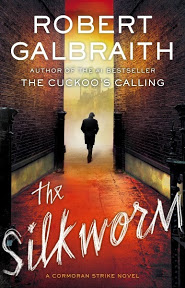
This is my first foray into reading Rowling post-Harry Potter. Instead of her first mystery with private detective Cormoran Strike, “Cuckoo’s Calling,” I went straight to the sequel and wasn’t confused by doing so. “The Silkworm” gives plenty of background on Strike and his handy assistant Robin so I didn’t feel out of the loop without having read “Cuckoo’s Calling,” though I’ll probably go back and read it sometime.
“The Silkworm” lured me, being a murder mystery set within the book publishing industry. Who better than Rowling would have an interesting perspective on that? I was game to see what she had cooked up about it.
The plot’s easy enough to follow. A novelist goes missing who’s just finished his latest manuscript, leading his wife to hire private eye Cormoran Strike to find him. It turns out the manuscript contains poisonous portraits of everyone the novelist (Owen Quine) knows, leading to an array of people who might want want to silence him before it’s to be published. But when Quine is found brutally murdered, the police zero in on his wife, who Strike thinks is innocent. In a race against time, he must find out who really killed him and why.
“The Silkworm” follows a typical murder-mystery arc, but Rowling infuses it with colorful character development. Who can build a cast of characters like she can? Afghanistan war veteran Cormoran Strike makes an intuitive PI, but this time around he’s limping around while trying to solve the case because his knee is injured above his prosthetic leg. His heart and head are a bit of a mess, too, since his longtime girlfriend, Charlotte, is now engaged to somebody else. Meanwhile his assistant Robin is having her own personal problems because her fiance Matthew disapproves of her work with Strike, and yet she wants to become more involved in the investigating and less solely as Strike’s secretary. In the long run both have to overcome their personal dilemmas to make any headway on the case.
The array of suspects in the author’s murder are all pretty slimy. Anyone of them seems like they could have murdered Quine who comes across as an narcissistic jerk. There’s his editor, the alcoholic; his agent, the parasite; his rival (an author who blames him for his wife’s suicide); his mistress who’s an author of fantasy erotica, and a couple of eccentric publishers out only for themselves. Who did it? Well, you won’t know for sure until about the last five pages of the 455-paged book.
“The Silkworm” takes quite a while to get to its conclusion. It’s detailed, lengthy, and not as quick a read as I originally thought it would be. Though Cormoran Strike and Robin are certainly entertaining to follow, I think “The Silkworm” would have been better if it were edited shorter, tauter and even more suspenseful. Moreover the book says Strike’s about 35 years old but to me he came off as older, maybe mid-40s. I also really wanted him to get his bad knee checked because it’s mentioned so many times in the book how he can barely walk that I felt like yelling ‘Please just go see a Doctor! or go to physio.’ But alas, he doesn’t.
I don’t normally read murder-mysteries, but I thought since it was summer it’d make a good back-deck read. For the most part I enjoyed it, especially for the characters and dialogue. The publishing world in “The Silkworm” sure didn’t turn out looking so hot — it definitely exemplified a darker side of people in the book industry, where ambitions in this case ran amok. The plot and conclusion were cleverly done. I guess I just wanted it to get there a bit sooner.
What about you have you read this one? Or any of J.K. Rowling’s books post-Harry Potter? And if so, what did you think? Continue reading
Posted in Books
14 Comments
Eyrie
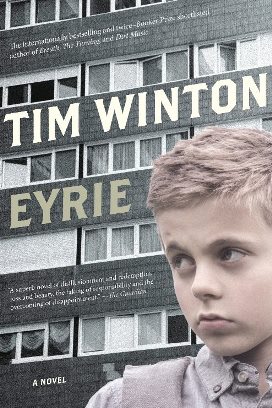
I’m a big fan of author Tim Winton’s books, having read “Dirt Music” (2001), “The Turning” (2005) and “Breath” (2008), but his new one “Eyrie” tested me a bit and I wasn’t sure if it was ever going to get off the ground.
It’s a story about Tom Keely, 49, a disillusioned environmentalist who lives in a downtrodden high-rise building overlooking the harbor of Fremantle, Australia. He’s divorced and been disgraced in some incident that’s forced him out of his job as spokesman for an activist group. It’s a bit sketchy what’s happened but suffice is to say he used to be on the TV news and was a prominent somebody but now he’s unemployed and his wife is gone. Meanwhile his sister and mother worry about him since Tom spends his days in a drug and alcohol haze, looking back on his life, angry at the world and becoming more broke by the minute. He’s also prone to sleepwalking, feinting spells and often doesn’t remember these episodes.
But eventually Tom runs into a neighbor from his childhood days who incidentally is living in his building. Gemma was the beauty from back then whose Tom’s parents generously gave refuge to, but she’s 44 now and taking care of her six-year-old grandson, Kai, because her druggy daughter is in prison. Tom forms a bond with them, helping Gemma on her work nights by watching Kai who’s a strange, shy, intelligent boy who worries Tom with his dreams about death.
But it’s when Kai’s meth-addicted father starts blackmailing Gemma for money and threatening Kai that things turn dicey. Tom is pressed into action that he hasn’t been capable of in eons. But whether they’ll be safe from the meth-punk, you won’t know till the very end.
“Eyrie” paints a vivid picture of disillusionment and place, the past and the present: the high-rise and the harbor in Fremantle, Tom’s childhood and current unwell state. But the story’s plot doesn’t seem to pick up until after page 200. For awhile, I wasn’t sure anything was going to happen in it. At the beginning it was just Tom going in and out of his apartment, drifting off to sleep, or listening to the building’s noises. I couldn’t take it much longer. So I was thankful for Gemma and Kai’s appearance and the novel’s last 100 pages when things indeed speed up.
Thank goodness. The second half with the meth-blackmailer dad are pretty gripping. Although the characters aren’t that likable, particularly the foul-mouthful Gemma who isn’t very grateful to Tom, I was into it by then and wasn’t sure how or if they’d escape. The ending turned out to be pretty abrupt (I had to read it over a few times), but it seemed real.
Judging from comments on Goodreads etc., other readers were either big fans of “Eyrie” or were really disappointed in it. Funny how that happens, such a wide dichotomy. I’d say I didn’t care much for the first half and liked it more in the second half. But overall, I didn’t think it his best book. From those I’ve read, I liked his books “Breath” and “The Turning” better. I’ll still read whatever he writes next. I haven’t read his 1991 novel “Cloudstreet” yet, which many say is his finest. I’m excited though that Tim Winton’s coming to our town’s book festival in October. Wow, now that’ll be good. I’ll have to get him to sign all my copies of his books.
How about you — have you read this author before or do you plan to? Continue reading
Posted in Books
4 Comments
A Sunny Homecoming
 Thomas Wolfe once wrote that you can’t go home again. I know what he means, but part of me says why the heck not. This week I’ve been back visiting my folks and roots again (see photo above), which I always really enjoy. I grew up in Southern, California, but my adult, married life is in Canada now, a world away. In between, I spent years in Texas, Colorado, Washington state, Virginia and D.C. All these places were great, but there’s so many memories in one’s hometown; is there not? I feel younger, and healthy here, too. What about you — do you still enjoy going back to your hometown?
Thomas Wolfe once wrote that you can’t go home again. I know what he means, but part of me says why the heck not. This week I’ve been back visiting my folks and roots again (see photo above), which I always really enjoy. I grew up in Southern, California, but my adult, married life is in Canada now, a world away. In between, I spent years in Texas, Colorado, Washington state, Virginia and D.C. All these places were great, but there’s so many memories in one’s hometown; is there not? I feel younger, and healthy here, too. What about you — do you still enjoy going back to your hometown?
This week I intend to finish Kate Morton’s thick-ish novel “The Forgotten Garden” on the plane back tomorrow as I have no time to waste with piles to read. I read her book for my book club, which we’ll discuss on Tuesday. It’s sort of a light, summer read but quite enjoyable nonetheless as Morton spins an engaging tale about family secrets.
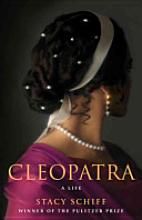
Meanwhile, I picked up two used, nonfiction books on sale here that look devourable. First, the 2010 biography of “Cleopatra” by Stacy Schiff, which I’ve wanted to read since going through a Rome phase sparked off by our trip there last fall. That was followed up by the “Rome” TV series from 2005 and 2007, which we spent the winter watching on DVD. Who doesn’t want to know more about Antony and the mysterious Cleopatra? Yes, count me in.

I also got J.R. Moehringer’s 2005 memoir “The Tender Bar,” which I’ve heard raves about for years. It seems a juicy read. Someone wrote he’s the “best memoirist of his kind since Mary Karr.” Hmm. Is this true? Have you read “The Tender Bar”? I recall Mary Karr’s “The Liars’ Club” being bleak but I’m hoping “The Tender Bar” is sweet and a bit funny, too. We’ll see.
Until next time, happy reading. Continue reading
Posted in Books
9 Comments
The Giver
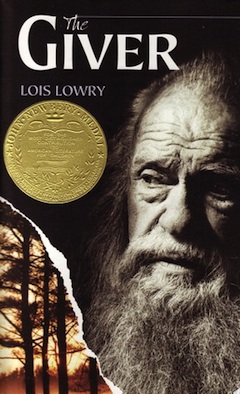
This was my first time reading Lois Lowry’s 1993 award-winning, young adult novel “The Giver.” It’s a slim book, which is coming out as a movie in August, starring Jeff Bridges, Meryl Streep, Katie Holmes, and even Taylor Swift among others. I was curious about the book and had to check it out. Perhaps a few of these older novels such as this one and “Ender’s Game,” which have recently been made into movies, are trying to follow-up on the coattails of the young-adult movie audiences for “The Hunger Games” and “Divergent.” The young-adult medium is sure the rage these days, though perhaps it’s always been pretty popular.
The movie trailer of “The Giver” appears to expand on the book and take some liberties with it. It gives off a sort of “Handmaid’s Tale” creepiness, too. And like that novel, and “Brave New World,” “The Giver” takes place in a utopian society in the future where things are tightly controlled, restricted, and not at all what they seem.
The community in “The Giver” has taken away hunger, war, suffering, unemployment, and sickness but has also eliminated color, music, and love. A selected handful of “Elders” control whom people marry, which children and jobs they get, and when they will be “released.” Choice has been restricted, and life follows a “Sameness” plan, where even people’s capacity for memories is eliminated and borne instead by a “Receiver of Memories.” He alone knows the past, but is now an old man who is called upon to train a successor.
Jonas is the eleven-year-old boy selected to be the next “Receiver of Memories.” But as he trains with the old man (the Giver) he comes to realize from the past the possibilities of what life once was. He’s able for the first time to see color and feel warmth, and becomes disillusioned with his family and the community for how it is. Ultimately it’s when he discovers a hidden chilling truth about what’s going on, that he decides to hatch a plot to change the “Sameness” and escape the community’s pain-free, sterile world.
It’s an interesting little book, which spookiness has stayed with me for awhile after. It’s not that “The Giver” necessarily blew me away with its storytelling or its message but its cautionary tale of such a colorless society is simply and straightforwardly told, and I followed Jonas eagerly to the depths of his journey of discovery. I’ll be looking forward to see how the filmmakers handle this utopian-turned-dystopian tale. Judging by the old man (the Giver) on the book’s cover, I haven’t exactly been able to picture Jeff Bridges as him, but we will see. As long as the movie captures some of the book’s eeriness and forewarning, it might just work.
What about you — have you read this Newbery Medal winner? And what did you think? Do you plan to see the movie? Continue reading
Posted in Books
11 Comments
The Railway Man
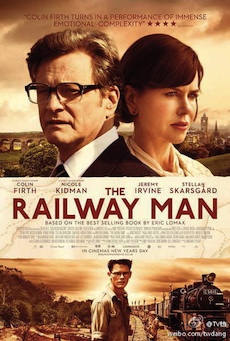
I feel a bit fortunate for a few reasons to have come across Eric Lomax’s WWII memoir “The Railway Man,” which was an education of sorts to me. In it he describes his experiences as one of thousands of prisoners-of-war who was forced to work on the ghastly Thailand to Burma railway, which was known as the Railway of Death because so many thousands perished working to build it.
Apparently some of “The Railway Man” was written after Lomax returned from the war and the rest was finished decades later. It was first published in 1995 and though it won a couple of awards in the U.K., I had not heard of it until this year when the movie of it starring Colin Firth and Nicole Kidman was scheduled to be released. The movie’s distribution was limited so I haven’t seen it yet, but from the trailer I’ve seen, it seems to take some poetic license and depart from the book in a few ways.
It’s interesting that Eric Lomax who was Scottish only recently died in October 2012 at age 93 while the film was still in production. His wife though came to its premiere at the Toronto film festival last September and apparently received a standing ovation.
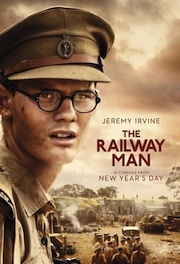
In his book, Lomax describes joining the British army at age 19 in 1939 and eventually being sent to South East Asia where he’s captured by the Japanese army with thousands of others following the surrender of Singapore in 1942. Along with a handful, he’s sent to work in the railway’s workshop repairing machinery for the tracks. But later he and five of the men are swept up after their hidden self-made radio is found and Lomax’s drawn map. He’s interrogated for weeks by Japanese soldiers, beaten up, tortured and confined to imprisonment in squalid conditions.
The scenes of his prisoner-of-war experience are quite vivid, and you get a sense of his inner thoughts about the uncertain, scary situations he endures. I didn’t know about the forced labor on the Burma Railway so the memoir is an eye-opener to that and to the brutal prisoner-of-war camps under the Japanese military.
What’s quite remarkable is that not only does Lomax survive WWII, but many decades later at age 70 he decides to confront his demons about the war, as well as his post-traumatic stress, and his avoidance of seeing Japanese people who he hasn’t faced since 1945. The end of his memoir is a journey into his turnaround, as he seeks professional counseling and falls in love with a woman he meets who becomes his second wife. Eventually with her help, Lomax reaches out to meet one of his torturers during the war who’s still alive in Japan. At first Lomax seeks revenge but soon realizes the man has suffered as well and tried hard to make amends over the many decades. The reconciliation between the two that follows is quite extraordinary some 50+ years later.
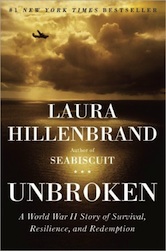
It’s a story of humanism, healing and forgiveness in the face of utter brutality that’ll likely stay with me. I plan to follow it up later in the year with the nonfiction award-winning book “The Unbroken” by Laura Hillenbrand, which is similar in its setting and topic. My husband has read it and I know it’s quite earth-shattering. The movie of which is coming out at Christmas.
For now, I’ll be glad knowing that Eric Lomax received some peace towards the end of his life. I’ll look for “The Railway Man” movie, though the trailer made me think the memoir would be much more of a love story than it actually turned out. Lomax talks about his wife and remarriage in the book but he doesn’t delve into it as fully perhaps as the Hollywood version. Also in real life, Lomax was considerably older (in his 70s) when he finally returns to Japan to meet his former enemy, who he’s no longer out to harm. Regardless of when it was, he was incredibly brave to do so.
What about you — have you read either of these books or any other prisoner-of-war accounts? Continue reading
Posted in Books
8 Comments
Annabel

We had a fun time on our bike trip along British Columbia’s Sunshine Coast and Vancouver Island, which ended on Sunday. We had only one day of rain, and enjoyed smooth roads, good company and pretty scenery. If you ever get a chance, bike touring is a great way to see parts of the world. I think I’ve taken at least one multi-day bike adventure each year for the past 15 years now, and it’s always been illuminating and invigorating in some way or another.
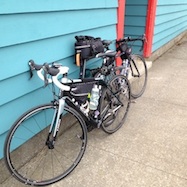
I highly recommend it, and you don’t have to be a bike pro to enjoy it either. I am no pro, just a bike riding enthusiast.
On the trip, I finished Kathleen Winter’s 2010 novel “Annabel,” which was discussed at my book club on Tuesday night. It’s another of those excellent reads that I likely wouldn’t have picked on my own. Chalk it up again to a good book club to broaden one’s book horizons. It definitely gets you out of your usual book-selection mold.
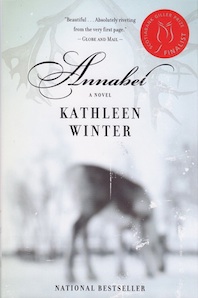
“Annabel’s” about an intersex child (born with both male and female genitalia, which is very rare) in 1968 in a small town in remote coastal Labrador. The child’s parents play traditional roles in the town’s hunting culture; the father is a trapper who spends months away in the wilderness and the mother works around the house. The father decides the baby, who undergoes surgery, will be raised as a boy (Wayne), though the mother secretly wishes the child were a daughter (Annabel). The parents don’t tell the child he was born intersex until something happens much later. Eventually Wayne moves away and stops taking his masculinity medications and begins to accept himself as he is.
It’s a novel that explores gender issues and empathizes with seeing beyond male/female-ness to the humanness of a person. It’s a character study into Wayne, his parents, a trusted neighbor, and the culture into how they view and cope with his intersex situation. I was convinced by the realness of the story and the feel of the town in Labrador. His parents surely have their troubles over his ambiguous circumstances but seem to evolve about it with time. I felt for Wayne and just thought he would’ve acted out more sometimes against the circumstances. He seems so calm in the face of the inner and outer turmoil when at times I felt like it might have been good to scream or throw something off a cliff or fight back against a bully.
It’s a very well-written book though and I felt like I was right there in the characters’ shoes so to speak, as they all go through a transformation of sorts. No wonder it was on the short list for both the Orange and Giller prizes. I definitely will look for the author’s next book once it comes out.
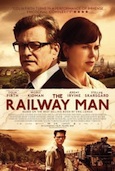
Meanwhile, I’ve picked up “The Railway Man” by Eric Lomax about his life during World War II when he was captured by the Japanese Army and forced to work on the Burma-Siam railway. Lomax died in 2012, but his story is now out as a movie with Colin Firth and Nicole Kidman. I plan to see it once I finish the book.
What about you — have you heard or read either of these books? Or what are you keen on reading these days? Continue reading
Posted in Books
16 Comments
